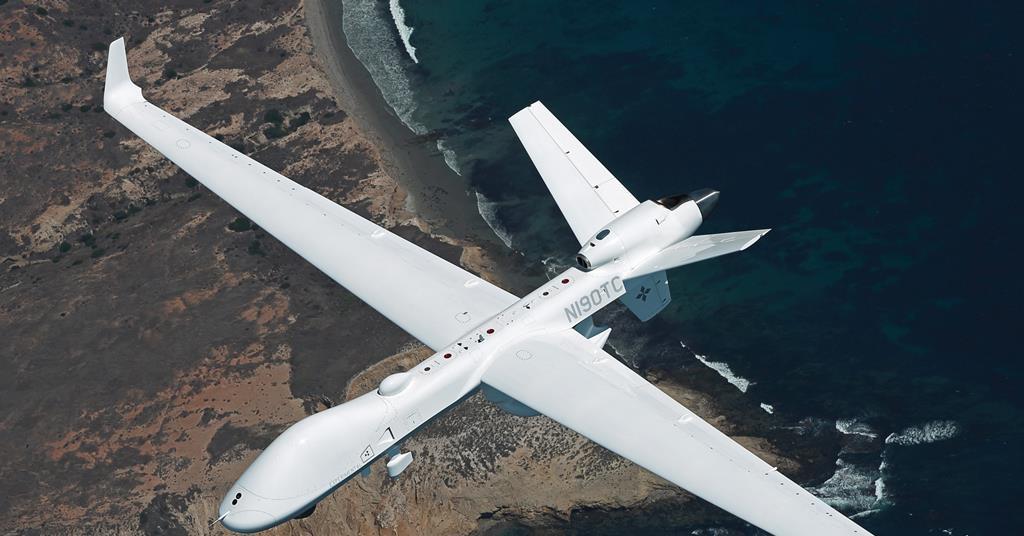General Atomics Aeronautical Systems’ (GA-ASI) MQ-9B SeaGuardian unmanned aerial vehicle demonstrated new capabilities during a recent naval exercise.
During the Rim of the Pacific (RIMPAC) event, the MQ-9B provided intelligence, surveillance and reconnaissance (ISR) and targeting data, as well as full-motion video, to the U.S. Navy’s command center, according to GA-ASI, capabilities the system demonstrated during the last iteration of RIMPAC in 2022.

New capabilities demonstrated this year included the ability to provide targeting for Lockheed Martin’s AGM-158C long-range anti-ship missile.
A focus of the U.S. military is developing “kill webs,” which integrate multiple sensor platforms such as the MQ-9B with a range of systems capable of producing kinetic effects. This allows aircraft such as the Boeing F/A-18E/F to hit a target with LRASM without having to rely solely on their own sensors.
Such a capability will be particularly important in a conflict with an equal opponent such as China.
At RIMPAC, the MQ-9B was also observed using a prototype sonar buoy delivery system pod. The UAV released the sonar buoys and monitored them using its integrated sonar buoy monitoring and control system.
According to GA-ASI President David Alexander, the MQ-9B was capable of transmitting ISR and targeting data to a range of U.S. aircraft and warships.
The company adds that the MQ-9B used in the RIMPAC mission was capable of deploying autonomously from California.
RIMPAC took place from June 27 to August 1 and is considered the largest international naval exercise. 29 nations, 40 ships and 150 aircraft took part in the exercise.

